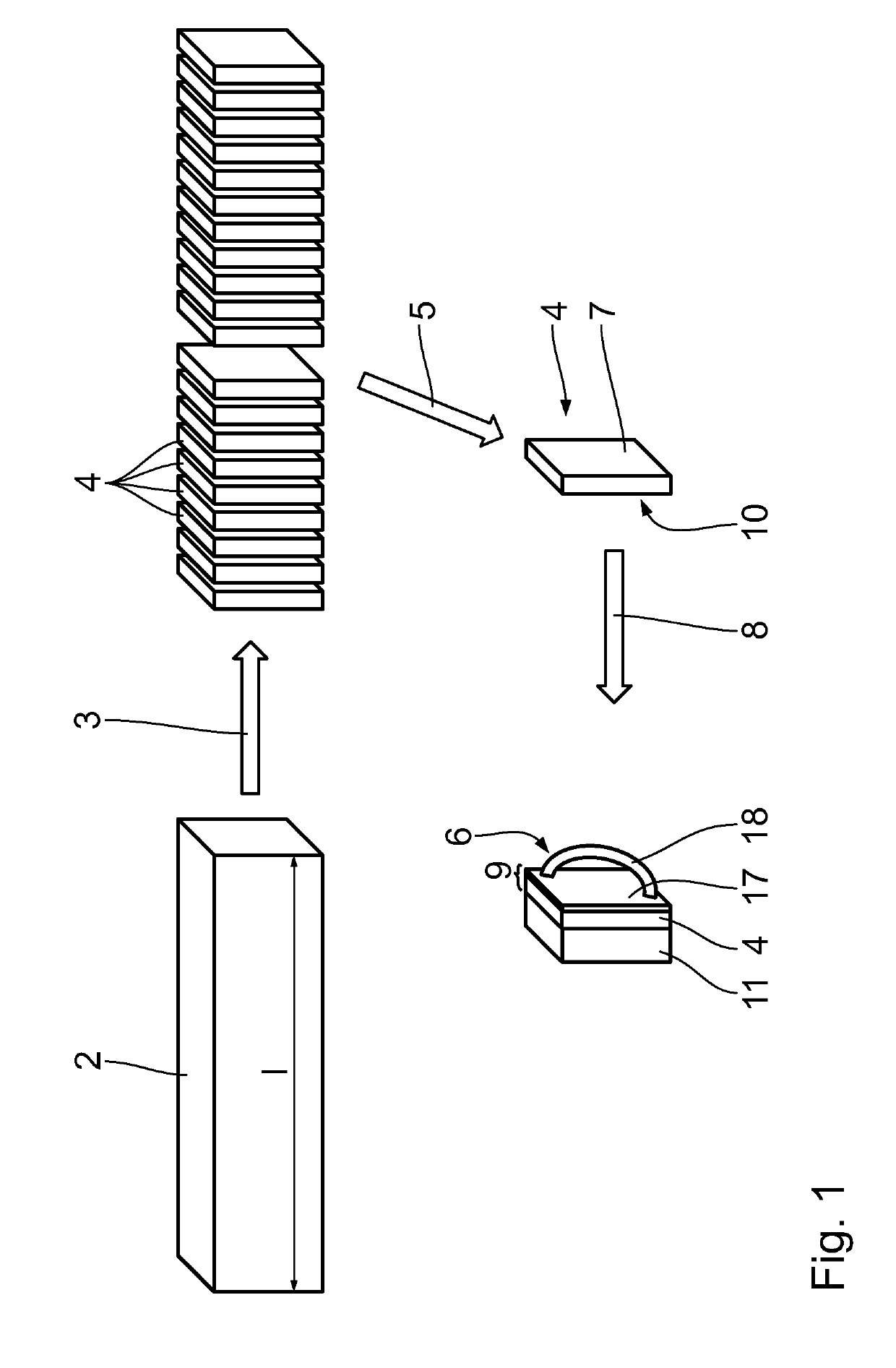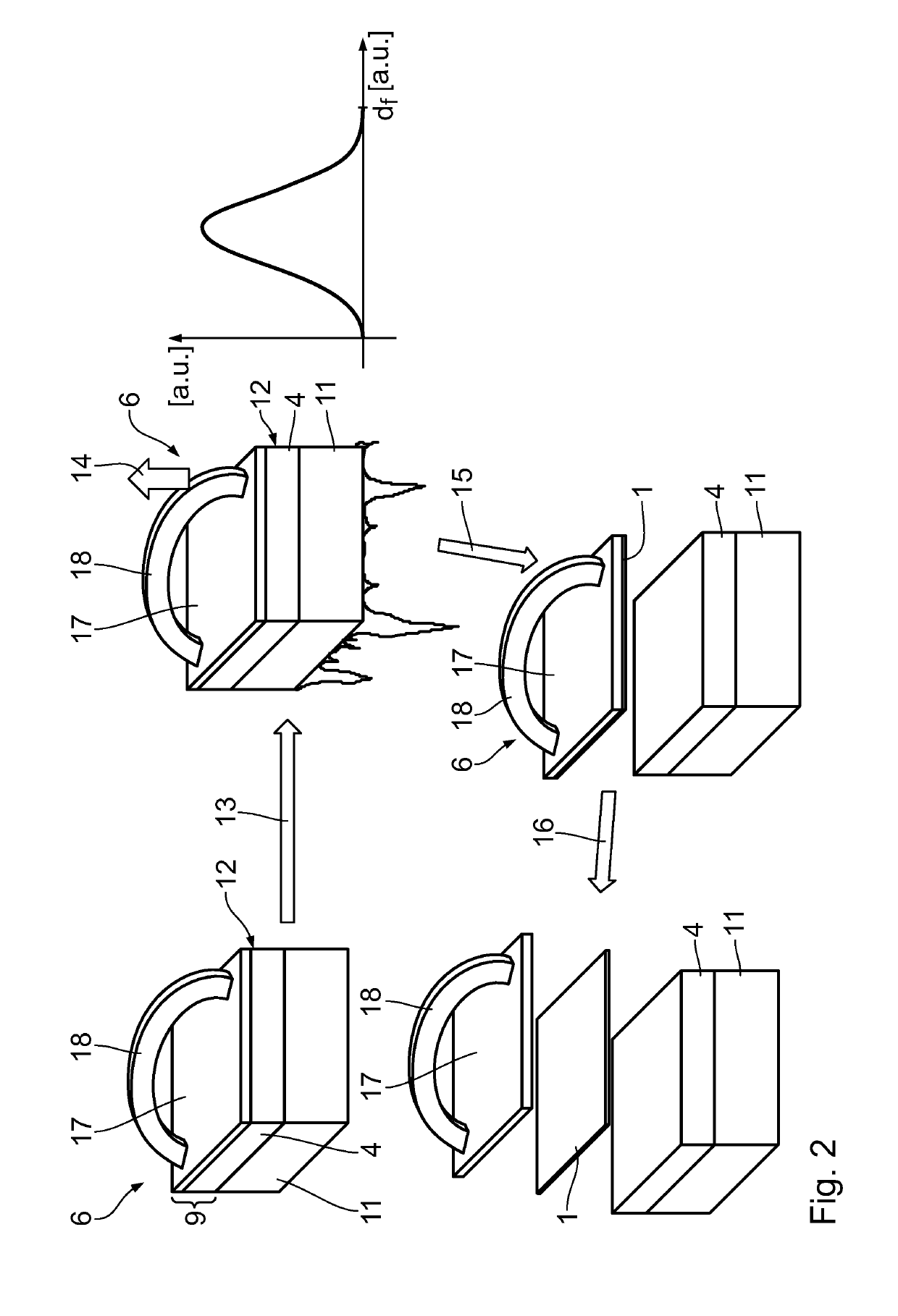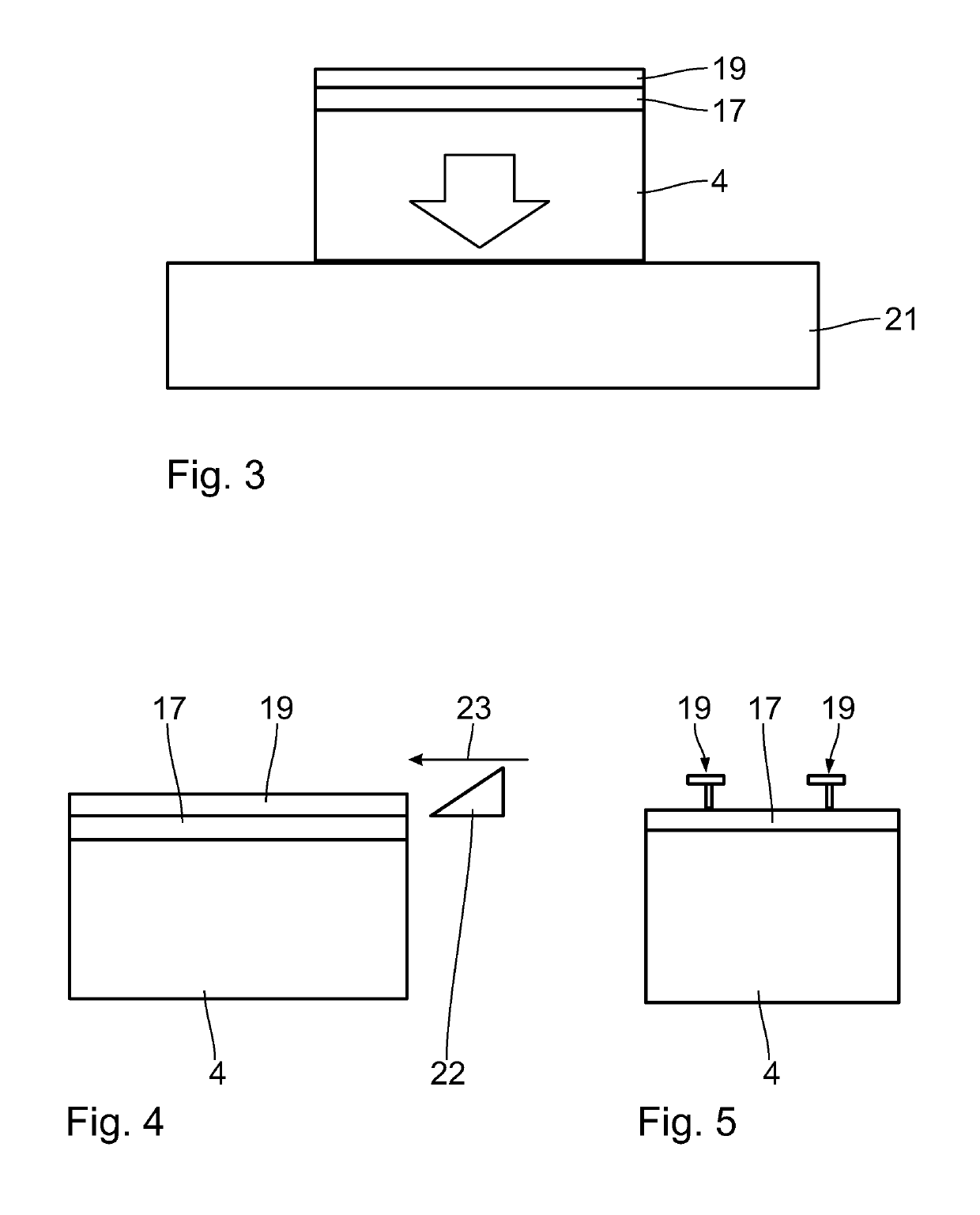Method and device for cleaving wafers
a technology of cleaving and wafers, applied in the field of cleaving wafers, can solve the problems of a high percentage of material loss, and achieve the effects of enhancing heat transfer by conduction, reducing temperature, and increasing the efficiency of bonding and freezing steps
- Summary
- Abstract
- Description
- Claims
- Application Information
AI Technical Summary
Benefits of technology
Problems solved by technology
Method used
Image
Examples
Embodiment Construction
[0043]In the following method for cleaving wafers 1 is described. First a block of crystalline material, in particular a silicon block, also known as silicon ingot 2, is provided. The silicon ingot 2 can have a monocrystalline or quasi-monocrystalline structure. With the term quasi-monocrystalline a structure is denoted, which is at least in 50% of its volume, in particular at least in 70% of its volume, in particular at least in 90% of its volume monocrystalline.
[0044]The silicon ingot 2 has preferably a cylindrical or cuboid shape. It can have a length 1 of more than 20 cm, in particular more than 30 cm, in particular more than 50 cm. It can have a square or round cross section A. The cross section A can be at least 10 cm×10 cm, in particular at least 15 cm×15 cm, in particular at least 20 cm×20 cm, in particular at least 25 cm×25 cm, in particular at least 30 cm×30 cm.
[0045]In a first cutting step 3 the silicon ingot 2 is cut into slices 4. For this a wire sawing process can be u...
PUM
| Property | Measurement | Unit |
|---|---|---|
| thickness | aaaaa | aaaaa |
| thickness | aaaaa | aaaaa |
| thickness | aaaaa | aaaaa |
Abstract
Description
Claims
Application Information
 Login to View More
Login to View More - R&D
- Intellectual Property
- Life Sciences
- Materials
- Tech Scout
- Unparalleled Data Quality
- Higher Quality Content
- 60% Fewer Hallucinations
Browse by: Latest US Patents, China's latest patents, Technical Efficacy Thesaurus, Application Domain, Technology Topic, Popular Technical Reports.
© 2025 PatSnap. All rights reserved.Legal|Privacy policy|Modern Slavery Act Transparency Statement|Sitemap|About US| Contact US: help@patsnap.com



